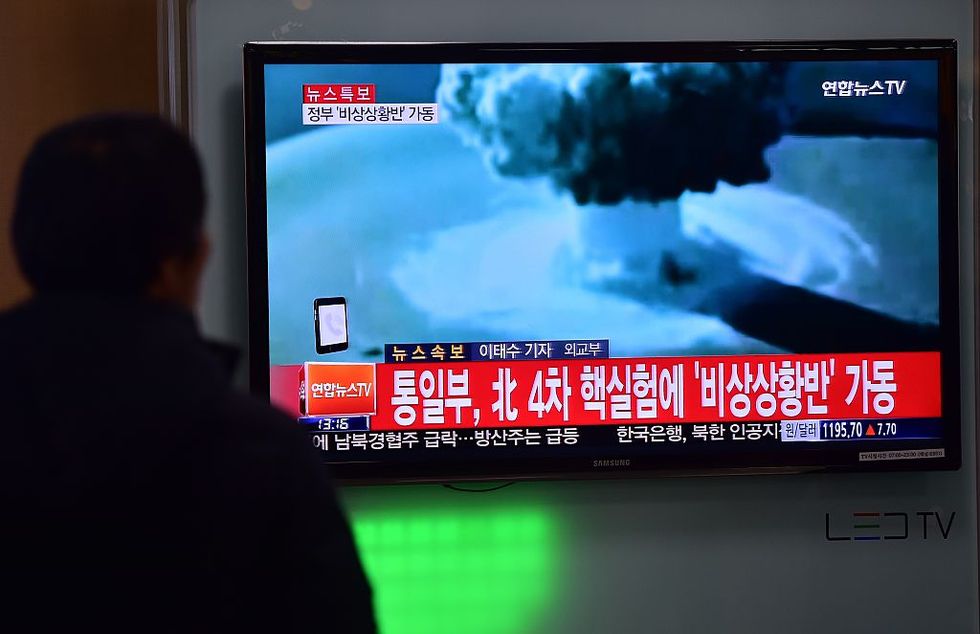
People watch a news report on North Korea's first hydrogen bomb test, Jan. 6, 2016. (Getty Images/JUNG YEON-JE/AFP)

The Obama administration doubts North Korea successfully tested a hydrogen bomb, but one former high ranking government official told TheBlaze TV's For the Record that it is further proof that the North Koreans are openly working to perfect an Electromagnetic Pulse weapon.
Dr. Peter Pry served on two congressional EMP Commissions in 2004 and 2008. While serving on the commission, Pry studied and reported on the tangible threat of an EMP attack against the United States.
An EMP can be created by detonating a nuclear warhead in the upper atmosphere of earth. The resulting pulse of electromagnetic energy can destroy virtually all electronics across an area spanning hundreds or even thousands of miles. The commission estimated that as many as 90 percent of all Americans could die of starvation and other causes in the wake of such an attack.
In an email Wednesday, Pry told For the Record that the North Korean test needs to looked at carefully and not casually dismissed.
“'Experts' in the press are widely dismissing North Korea's claim because the apparent yield, like the other 3 nuclear tests, is in the neighborhood of 10 kilotons or less,” Pry wrote. "The ‘experts' associate H-Bombs, also called thermonuclear weapons, with very high-yields, hundreds or thousands of kilotons (the latter being megatons).
"However, there is another kind of H-Bomb. Neutron bombs or Enhanced Radiation Weapons such as Super-EMP weapons are essentially very low-yield H-Bombs, that typically have yields of 1-10 kilotons, just like the North Korean device," Pry continued. "Thus, Kim Jong-Un could be telling the truth. Indeed, all four North Korean nuclear tests look like a Super-EMP weapon because of their very low yield. That the 'Dear Leader' describes the latest test as an H-Bomb is further evidence that North Korea's mysterious nuke is a Super-EMP warhead.”
In November 2015, For the Record interviewed Pry for an upcoming episode on the threat of EMP. During that interview, he explained that in 2000, the congressional EMP Commission received troubling news from a group of visiting Russian dignitaries:
Design information and even scientists from Russia had gone to work for the North Koreans. And that in a few years, the North Koreans were going to be able to develop a super EMP nuclear weapon. This was in 2004. And then in 2006, a few years later, right on the money, North Korea had first its nuclear test that most of the world said, 'Oh, it’s a failed test,' because it was such a low yield weapon. It was only a few kilotons.But the North Koreans thought it was successful and not only that, but put their money where their mouth was because they started weaponizing it immediately and putting this weapon, whatever it was, they were happy with it, on missiles.
To us, I mean it had all the signs of being a super EMP. It’s a small weapon. It doesn’t generate a big yield, you know. The Russians had told us that they were working on a super, you know, and it looked like a super in terms of the seismic signal and all of that. And all three of their nuclear tests have basically been of the same thing; you know, this low yield test that they seem to be very happy with.